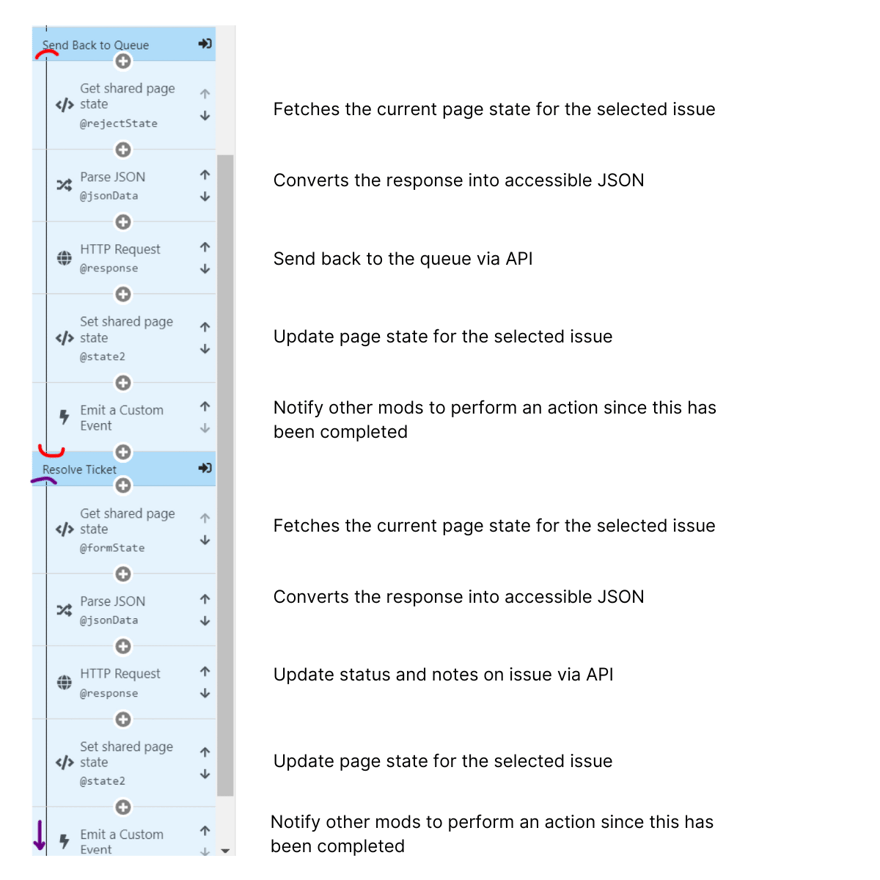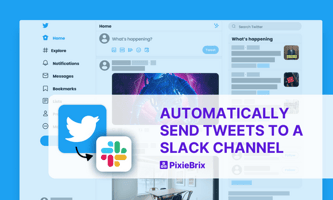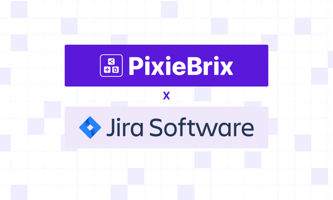How much of your day is taken up by repetitive work? An hour? A few hours?
A Low-code Ticket Backlog Wizard Browser Mod
The past year has seen the launch and evolution of dozens of Agent Assist tools in the Customer Support tech landscape. There are several reasons why this area of growth has emerged:
- Customer are demanding personalized experiences
- Highly rated customer satisfaction requires speed and accuracy
- AI technologies and LLM models have advanced to a point where they are less robotic sounding and frustrating for the end-user
This space is full of tools that promise to boost your agents' efficiency. Unlike well-defined competitors as we see, for example, in the VoIP, and helpdesk markets, Agent Assist can mean one of a multitude of solutions. What this has resulted in is a market of dozens of tools which cover one use case well or parts of many use cases.
A low-code browser mod tool is a solution to this problem. Instead of procuring an app that may not meet your entire use case, with a little training you can build quick and easy to maintain workflow mods that cater to your specific needs. PixieBrix, a leading browser mod creation app, is fast to implement, light-weight to deploy, and is configurable to work across your entire tech stack, not just a single tool. This leads to a higher ROI, as for one price you can enhance your help desk, your CRM, your knowledge base, and any other tools you use to delight your customers.
What is a Browser Mod?
Browser mods are small applications which can alter or add functionality of your browser. Their power comes from the ability to improve your user experience of a specific website or element of many websites. Companies can use browser mods to tailor their browsing experience to their preferences, improve productivity, enhance privacy, or fix annoyances. Instead of relying on someone else to build what you need, you can add the specific features you want across the web with little coding experience.
What is Agent Assist?
Agent Assist tools are ones that enhance some area of the agents' experience inside their help desk or with other tools used in a ticket workflow. Tools in this market often provide features such as:
- Sentiment analysis and escalation prediction
- Useful context and metadata from other 3rd party apps
- Generated responses
- Suggested macros or help center articles
- Automating complex workflows, such as processing a refund or delivering a shipment slip
- Ticket categorization or drivers
- Ticket summarization
- Translation services
One or all of these might be relevant to your support team and tools exist to solve some or all of these use cases. However, they can be expensive and have long implementation or training times, and often require you to allow a 3rd party to access your data. With a custom browser mod, you can solve the use cases that are important to you, control the workflow, and have tighter data security.
Agent Assist tools are starting to become critical to the support tech stack. Increasing productivity is easier with the access to AI and APIs becoming increasingly democratized. The only question you should be asking yourself is: "What do I want to implement?" Not "should I implement?"
Creating a Custom Browser Mod
A common Agent Assist use case for customer support teams is to improve the speed and quality of answers to repeated questions from customers. Instead of looking for a point tool to solve this problem, PixieBrix can help you create one or more browser mods which give you more flexibility at a cheaper price, across more tools.
Using PixieBrix, we can build a highly customized backlog wizard that solves your exact use cases, uses your knowledge, and removes added clicks for your agents. There are many advantages to the browser mod creation approach over purchasing a third party tool.
The Use Case
A significant amount of the effort in solving a ticket is in navigating the helpdesk's UI. Selecting a queue, waiting for a ticket to load, setting dropdown fields, conducting spell/grammar/tone checks, assignment, etc. all require multiple clicks and bouncing around between widgets and web pages. Over time, these seconds add up to a frustrating agent experience and scaling unproductive time.
This is especially with organizations who have tickets with the same answer or tickets that are often repeated, such as in e-commerce or many B2C companies. Traditional solutions like macros can sound very robotic and don't contain a personal touch that provides a great customer experience. And in situations where your backlog has grown, for example due to a crisis, or a bad product release, you want a quick, personalized way to respond to and categorize all of your tickets.
A Solution
What if we simplified the user interface of your help desk? With LLM technology, and workflow automation you can create human sounding responses, categorize tickets, and alter their statuses in the click of one button or if the automated solution doesn't appear to be correct you can also escalate it to a tier two agent to review just as easily.
Enter "Tinder for help desk." Using PixieBrix and ChatGPT, we can build a simplified UI that reads your tickets in a queue one at a time, creates personalized responses, updates ticket status and speeds through your ticket queue faster than you could through the native UI.
In the three steps below, we are going to illustrate a simple example that you can customize for your needs which replaces your help desk UI with ticket resolutions as fast as swiping right.
Instructions
For each step watch the quick video that outlines the Bricks used in the process, combine that with the tips and tricks listed below each video and then add your own customization, personalization, branding, documentation and training for a fast, low code, browser mod you can deploy to your agents. It will be personalized to your needs and cost less than third party software would.
Step 1: Creating the Mod and Connecting Zendesk
The goal of this first step is to set up the browser mod and to get the page state to contain all the tickets in the view we wish to clear.
Mod creation tips:
- Styling the button can be done manually, or by selecting an element on the page that contains the styling you want
- Extract from the page often requires the 'Inspect' feature that will look into the HTML code of the webpage. Unfortunately, the IDs are not often intuitive or use natural language. Try to find the unique element or attribute which contains what you want. In this case the "kXDrba" class identified the highlighted view, and it also contained an element called "data-view-id" which made it easy to pull out the relevant, selected ID to a variable.
- In this case, the HTTP Request we used was from the Zendesk View API.
- Creating a Mod to contain all the Brick Actions is a great way to separate out different components of your solution for easier maintenance
- Adding variables to the page state allows them to be accessed and manipulated by other bricks during the execution of your mod
- Running your mod periodically to check the Input and Output currently available and validate if it is what you would expect
- Not that each variable has a copy icon beside it, allowing you to copy its exact path to access it.
Step 2: Getting an AI Generated Response
Building a triggerable event is really useful for:
- automating actions but manually triggering when it's fired
- performing automation every time a page loads
- empowering users to start a series of automation with a button
When using GPT:
- Role is used to provide system instructions, and/or set a user prompt
- Content is your prompt details
Step 3: Building the Agent UI
- A UI can be a sidebar, or a modal widget. It will depend on your use cases which you choose
- Each actionable widget (such as a button) has a "pipeline" that is indicated by the lines between each widget. Anything within the lines will execute when the widget is triggered
- The rich text widgets support Markdown
- You can use Nunjucks Syntax for text manipulation
- JSON syntax is documented here, however most APIs will give you examples of the expected syntax for each of their endpoints
- Container widgets in the UI can be hidden based on the rule inputted. Note that this rule is for when the widget should *not* be shown

Benefits of Browser Mods
Workflow automation is becoming increasingly important and is easier than ever to accomplish. Repetitive, manual tasks frustrate employees and waste time. While a point solution can solve the specific use cases it was written for, browser mods have the ability to transform actions across your entire organization and tech stack at a lower cost. In addition, they can be customized to your specific needs, with your branding, and with little or no development expertise.
And if a point solution is what you are after, PixieBrix has a fully sourced Marketplace of other customer creations you can activate for immediate use or to customize to your liking. Small things from sharing links to Slack or converting timezones instantly to complex use cases such as generating summaries of highlighted text or translating an email are all available for you from day one.
While the example above was quite simple, you can easily include more information to generate more accurate responses, add features such as setting priority and category, validating sentiment, and automatic escalation. The benefits of this solution is that the possibilities are truly endless. Any process you take on a regular basis has the opportunity to be improved through automation, increasing productivity for you and your team.
When compared to point solutions, PixieBrix is cheaper, covers wider use cases across your entire tech stack, is completely customizable, and can be modified at any time on your schedule, not a third party's.


